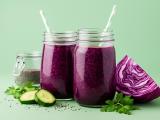Why are Sprouts and Microgreens Superfoods?
When a seed begins to sprout, a little miracle of nature is triggered within it. The level of vitamin C rises, enzymes begin to form (these are natural scissors that help break down food), and the amount of certain amino acids that our bodies greatly need also increases. The quantity of antioxidants – these guardians of our cells against damage – also greatly increases.
For instance, a study by the United States Department of Agriculture (USDA) in 2014 showed that broccoli microgreens can have up to 40 times more vitamins than a fully mature plant of the same type. In other words, a small stem of arugula, sprouted just a few days ago, can be more nutritious than a large adult arugula from the store.
And what is most surprising – all this power is already in one single small shoot, which you may have previously only seen as a decoration on your plate.
The Healing Power of Sprouts: Ancient Chinese Considered Them Medicine
The history of sprout consumption dates back far – more than 5000 years. In China, doctors recommended them for treating respiratory problems, digestion issues, and even as a means to strengthen the body after illness. In the 18th century, British sailors consumed sprouts on long voyages to prevent scurvy – a disease caused by a lack of vitamin C.
Even the Bible mentions the importance of plant-based food, especially in the book of Daniel, where the heroes eat seeds and vegetables to maintain health and strength.
Microgreens – A Plant with a Story from San Francisco
Microgreens emerged as a dietary trend in the nineties in San Francisco. Initially used as mere decoration on plates in prestigious restaurants, soon top chefs and nutrition experts recognized their value. Today, microgreens are accessible to practically everyone – you can buy them or grow them yourself on your kitchen shelf.
You don't need a garden to grow them, just some soil or other substrate (a special plant growth mix, often made of coconut fibers or compost), light, and water. Microgreens grow in 7 to 15 days, and you harvest them by cutting just above the soil when they develop their first true leaves.
What Can You Grow?
The possibilities are vast. Some of the most popular microgreens include:
- Broccoli (rich in vitamins C, A, and iron)
- Beetroot (for strong blood, as it contains plenty of folic acid)
- Arugula (increases appetite and aids digestion)
- Peas (rich in proteins and B vitamins)
- Basil (soothes the stomach and works against inflammation)
However, avoid growing microgreens from plants such as tomatoes, peppers, and eggplants, as they belong to the nightshade family (Solanaceae), and their shoots may contain alkaloids – natural substances that can be harmful in larger quantities.
Sprouts – A Simple Path to Fresh Food
Unlike microgreens, sprouts are not planted in soil. They only need water and warmth. Soak the seeds for 8–12 hours, then rinse them 2–3 times a day until sprouts develop. This usually takes from 2 to 7 days, depending on the seed type.
The most commonly sprouted seeds by people include:
- Alfalfa – one of the easiest to sprout
- Wheat – also for wheatgrass
- Mung Beans – very popular in Asian cuisine
- Sunflower Seeds
- Flax Seeds – containing omega-3 fatty acids
Flax and pumpkin seeds are particularly prized for their high content of healthy fats essential for hormone and brain function. Sunflower seeds are rich in vitamin E, which protects our cells from aging.
How to Incorporate Them into Your Diet?
You can add sprouts to salads, sandwiches, soups (but only at the end so they don't overcook), or simply eat them as a snack. You can use microgreens in a similar way – as a flavorful and healthy garnish on your plate. They pair well with fresh cheese, scrambled eggs, or as an addition to creamy soups.
And what is extremely important: since they are consumed raw, all their nutritional value remains unchanged.
Freshness Is Key
Remember: both sprouts and microgreens must always be fresh. Store them in the refrigerator for a maximum of 4–5 days, preferably in a paper bag or a breathable container. If you notice an unpleasant odor or sliminess, it's better to discard them. It would be a shame for your efforts to be ruined by improper hygiene.
Compelling Data:
- In one cup of alfalfa sprouts, there are only 8 calories, but it contains 14% of the daily requirement for vitamin K.
- Broccoli sprouts contain a significant amount of sulforaphane, a substance that studies at Johns Hopkins University suggest has anti-carcinogenic properties.
- Pea microgreens have up to 7 times more vitamin C than mature peas.
A study published in the Journal of Agricultural and Food Chemistry in 2012 showed that microgreens have up to 6 times more polyphenols (natural antioxidants) than mature vegetables.
Safety First
Although sprouts are incredibly healthy, they are sensitive to bacteria as they grow in warm and humid environments. We recommend thoroughly rinsing them under running water before use. If you have a weakened immune system, are pregnant, or elderly, consult a doctor or opt for microgreens, which are safer due to their above-ground growth.
Final Thoughts
Sprouts and microgreens are not just a passing trend but the food of the future – fresh, nutritious, easily accessible, and full of life. In an era where everything revolves around fast food and artificial additives, they represent a return to basics. And the best part is – you can grow them yourself in your kitchen, with your own hands.
In a world where health is the greatest wealth, every homegrown sprout is a small treasure.









 Would you like to be informed about news on the website?
Would you like to be informed about news on the website?

